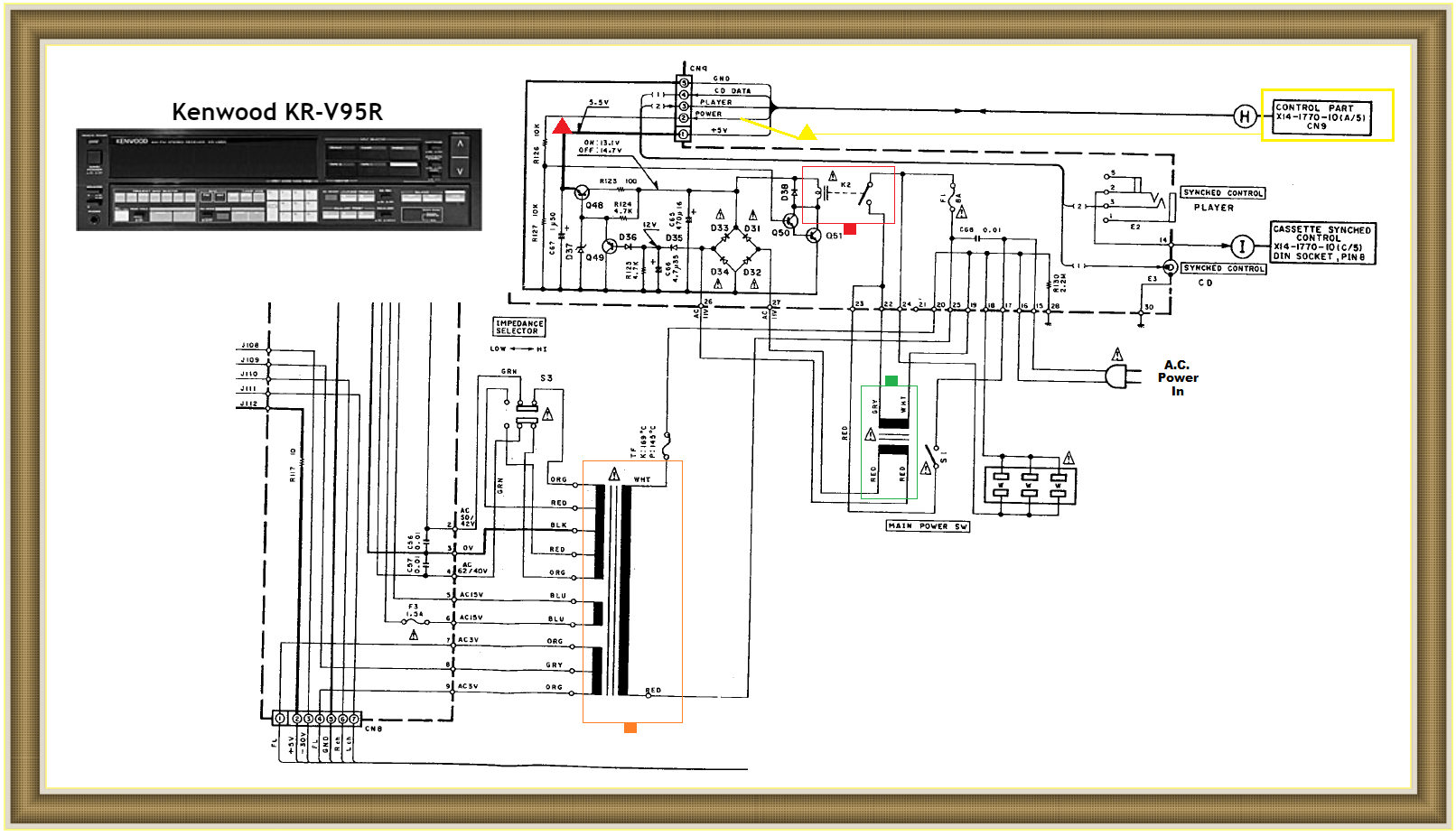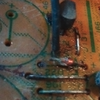...So I looked around inside it ...
Wow! That's the very first step most of us here at Electronics Point take when troubleshooting "dead" electronics. But visual inspection must now always be followed by electrical testing, lest the troubleshooter waste expensive time and money replacing parts that don't need replacing. Hot melt glue has become the "go to" solution for holding pesky heavy electronics stuff in place because it saves a ton of labor that would otherwise be wasted on installing clamps, screws, nuts, washers, etc. I've even seen power transformers (albeit small ones) held in place with glue.
I can remember when 99 44/100% of the time, all the "troubleshooting" one needed to do was to find the vacuum tube whose filament wasn't glowing and replace that tube to effect a repair. <sigh> Those profitable servicing days are long gone.
In the old days, circa 1960 or so, I used the visual inspection time to blow away dust and to allow my oscilloscope, audio-frequency signal generator, and vacuum tube voltmeter to warm up and stabilize. Most vacuum tube test equipment is funny that way, drifting and bobbing up and down like a raft on the open sea until everything gets warm and toasty inside.
Today, almost all my test equipment is solid-state (transistorized, if you wanna use an older term) and is "instant on" with no warm-up necessary. Well, my el-cheapo Chinese LCD digital storage oscilloscope does have a "recommended" warm-up time of about one hour or so, but I leave it on all the time anyway when I am working on the bench. And my vacuum tube voltmeter disappeared about the same time that I misplaced my grid-dip meter, so since then I've gone through several multi-meters. I really like my Triplett Model 310 analog pocket-sized meters with their D'Arsonval meter movements and 20,000 ohms per volt sensitivity.
These were not much good for troubleshooting high-impedance vacuum tube circuits, and its annoying to have to pay attention to probe polarity when troubleshooting electronics with positive and negative supply rails, but I like 'em. I also really like my
Mooshimeter, which is a fully floating multi-meter that I read using my iPhone.
My points are these: (1) Avoid Asian-sourced electronics parts from suppliers you haven't personally vetted, because otherwise you never know what you will get. Counterfeits and pure junk abound, so even a reliable supplier in the past may now be offering parts of dubious lineage and reliability. (2) Always at least check power supply voltages before deciding if anything is bad. I once spent hours "troubleshooting" a breadboard circuit that used op-amps, only to eventually discover that I had forgotten to turn on the ±15V DC power supply. (3) Either purchase or borrow some good test equipment.
You can get by (barely) with a digital multimeter purchased from a big-box home improvement store. Get one with at least 3-1/2 digits resolution. If this will be a one-time troubleshooting effort, consider adding an
inexpensive oscilloscope kit. Available for less than thirty bux. Audio signal generators are a great way to insert test signals into audio amplifiers and such, but you can get by with using a laptop or desktop computer's sound output jack, along with some software you can write in Visual BASIC or download for free. Or just breadboard a 555 timer IC as a free-running oscillator powered from a 9V "transistor radio" battery. We will assume you already know how to do that, but if not... please ask!
We're here to help, so get busy doing some REAL troubleshooting using the suggestions offered by
@73's de Edd.







